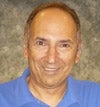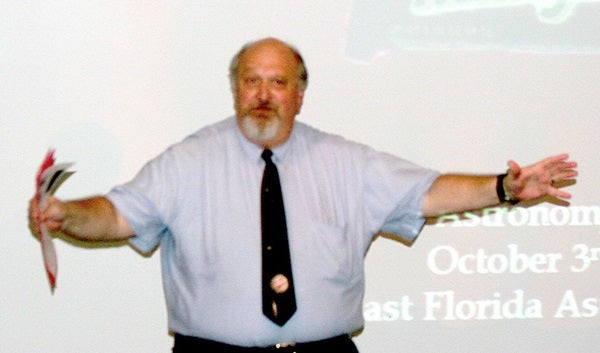Named for a valley that divides the Grand Teton and Yellowstone national parks, the city of Jackson Hole, Wyoming, has a vibrant astronomy club. Because of Jackson Hole’s elevation, its night sky is particularly dark and crisp. The Jackson (Hole) Astronomy Club takes advantage of the many clear nights to show off the sky’s major, and even not-so-major, attractions.
The club’s more advanced members have observatories from which they gaze at the sky on clear nights, but they see fostering interest in astronomy as one of their most important activities. Their monthly schedule is crowded with schoolyard star parties. One of their most active members, Walt Farmer the astro-cowboy, has an observatory filled with signatures and drawings by its many visitors. My own meek addition, a traditional “smiling comet,” appears now on the building’s north wall. The artwork also gives children the chance to express how they see the connections between art and science while they peer into the night.
It’s almost impossible to live in Jackson Hole without having some appreciation for the fabulous wilderness that surrounds it, particularly to the north where the triple volcanic calderas of Yellowstone protect the city from a huge seething subterranean mass of liquid rock. By far the largest volcano system in the United States, it remains active with geysers of boiling water. They erupt regularly like Old Faithful, or almost continuously like the Clepsydra Geyser that stands near a cache of boiling mud.
Just 4 days after I returned home to Vail, Arizona, from Jackson Hole, I departed again for my first visit to Jacksonville, Florida. This city is special because it marks a place where the Sharing the Sky Foundation, in its effort to inspire the next generation to enjoy the stars, recently donated a 14-inch Schmidt-Cassegrain telescope to the former Florida Community College at Jacksonville (now Florida State College at Jacksonville [FSCJ]). This instrument will reside in an out-of-town observatory, which should attract astronomy students from all over the state.
Although Florida does not have the darkest sky in the world, its exceptionally steady views have allowed top-notch astrophotographers like Don Parker to flourish. And Mike D. Reynolds, FSCJ’s dean of liberal arts and sciences and a contributing editor of Astronomy, provides a high-quality astronomy program for students. He emphasizes meteor showers and eclipses — two areas of astronomy about which he is passionate.
“Dr. Mike” designs programs so they can reach a broad range of students. He tries to keep them as balanced as possible, mixing practical observation with theoretical aspects. Beyond that, he has thrown open the college’s doors for a vast array of astronomical outreach programming. For instance, on a single afternoon this past October, he arranged for six major speakers to talk about divergent aspects of astronomy, from astro-imaging to higher math.
His program’s healthy observing component was evident October 3, when many of us took advantage of the clear Florida sky with several telescopes from the Northeast Florida Astronomy Society. We enjoyed good views of Jupiter, as well as the Moon a few hours short of full and a few days shy of its much-anticipated impact with the LCROSS spacecraft. By encouraging us to study the Moon at this time, Reynolds emphasized the connection between an amateur’s casual delight in the night sky and a major national space effort.
Just as the same name belonged to a humble fur trader and a president of the United States, so does the word astronomer include the novice simply looking up and the professional discovering new worlds. After my visits, it’s clear these towns share more than just a name.
February 2010: One world, one sky
See an archive of David H. Levy’s Evening Stars











